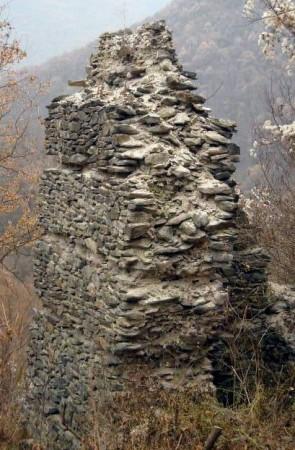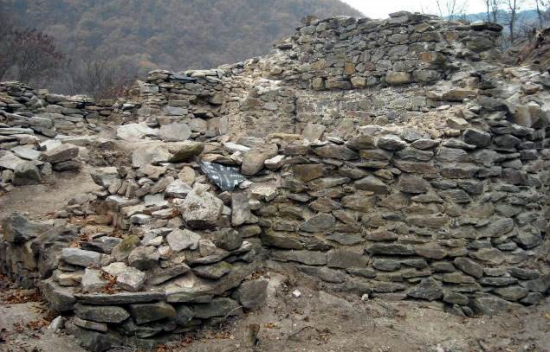Photos: Kralowec
Source - http://sofiaglobe.com/2012/10/09/archaeology-new-excavations-begin-at-bulgarias-medieval-urvich-fortress/
Archaeologists began new excavations at the medieval Urvich fortress 20km from Bulgaria’s capital city Sofia at the beginning of October 2012, with the first finds including silver rings, earrings and bronze and iron personal items, Bulgarian archaeology professor Nikolai Ovcharov said.
Urvich fortress is near the banks of the Iskar River in the Pancharevo area close to the road from Sofia to Samokov.
The fortress is estimated to date from the 13th century CE, during the time of the Second Bulgarian Kingdom.
Ovcharov told a news conference that work was to begin at a large necropolis near the fortress and the monastery.

New discoveries include 13th century Venetian and 16th century Turkish coins.
At the St Elias church site in the area, 18 silver coins were discovered in 2011.
Legend has it that the young widow of tsar Ivan Assen V became a nun at the monastery at St Elias after his death.
Bonnie Petrunova, deputy director of Bulgaria’s National Archaeological Museum, said that legend was that the monastery was a popular place for people to pray for the healing of their ill children and, going by wedding jewellery found in the 1970s, was also a popular place for wedding ceremonies.
Petrunova said that she expected Urvich to yield other treasures.

Sofia municipality has given 40 000 leva towards the current archaeological excavations and the ultimate goal is to develop the Urvich fortress location into a tourist and pilgrimage site, with the church being restored to use.
Urvich was one of the most important strongholds of the ancient approaches to Sredets, today’s Sofia, according to Ovcharov.
The fortress played a major role in defending the Bulgarian capital during the Ottoman offensive in 1371 to 1382. It was one of Tsar Ivan Shishman’s most important fortresses and is mentioned in Paisii Hillendarski’s history of the Bulgarians.